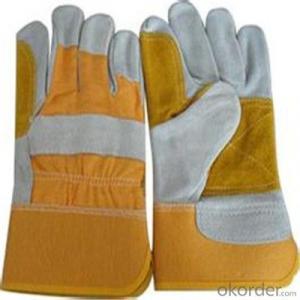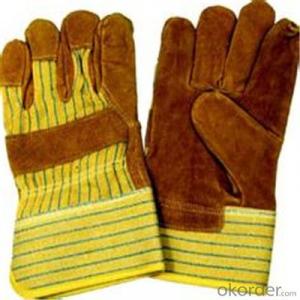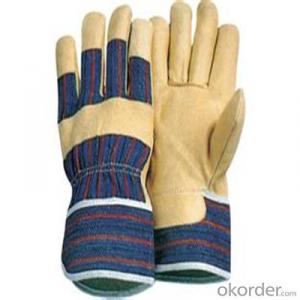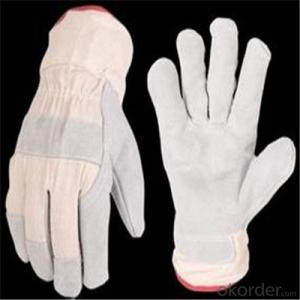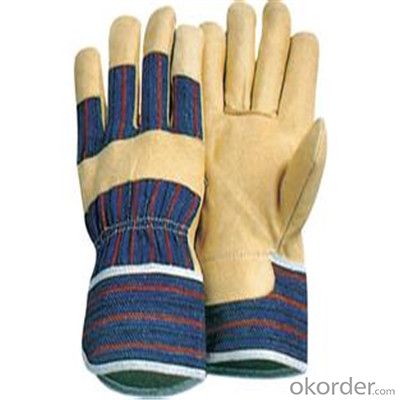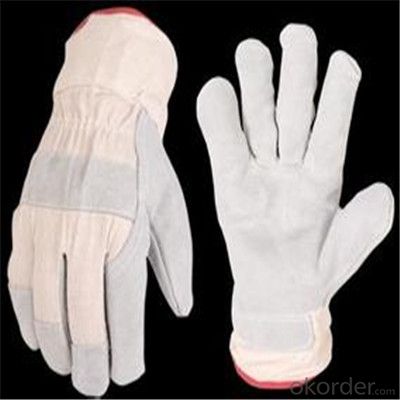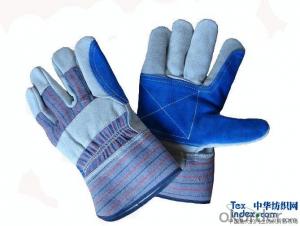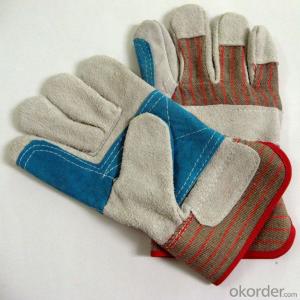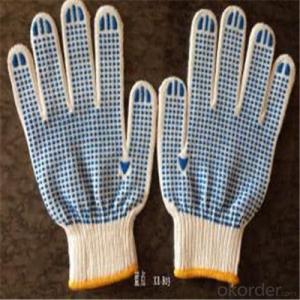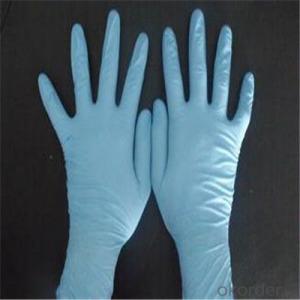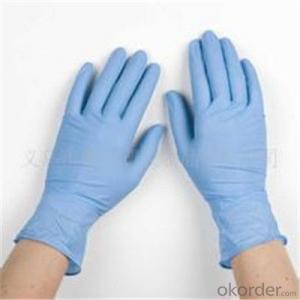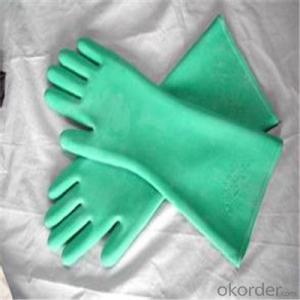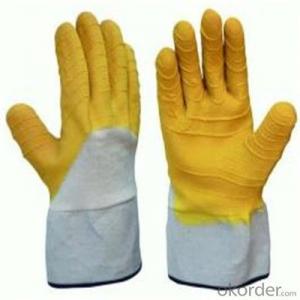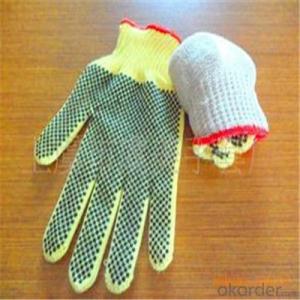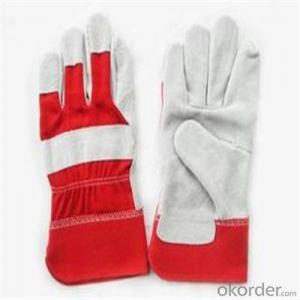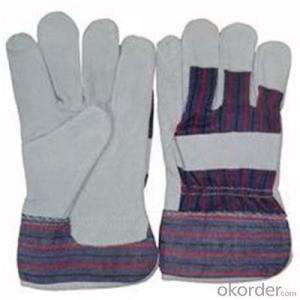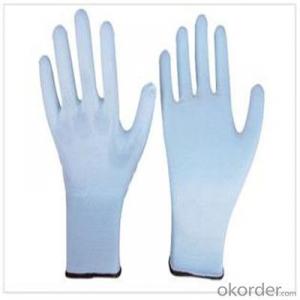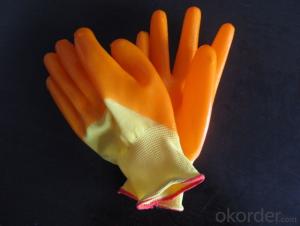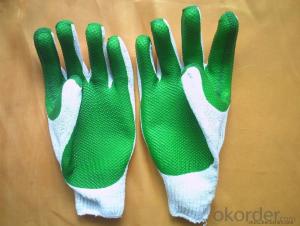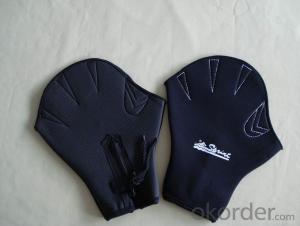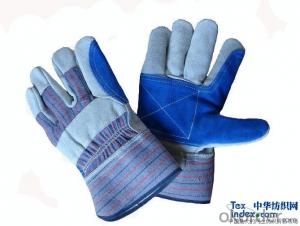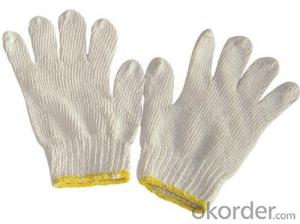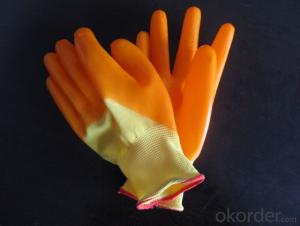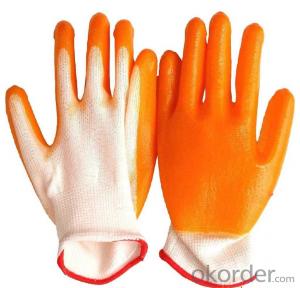Neoprene Driving Gloves with Split Double Palm Leather Work Glove
- Loading Port:
- Wenzhou
- Payment Terms:
- TT OR LC
- Min Order Qty:
- 88 pc
- Supply Capability:
- 10005655 pc/month
OKorder Service Pledge
OKorder Financial Service
You Might Also Like
Description of Glove:
Properties:comfortable cow split leather,
good flexing performance and abrasion resistant
Length: 10.5" working glove
Material: cow split leather + T/C fabric, pasted cuff, multicolor jersey half linling
Grade:A,AB,B,BC grade available
Design:reinforcement palm,paste cuff,palm lined
Festures of Glove:
Hand protection is a specialist area and our range offers more than 80 different models to protect hands from cuts and abrasions, chemicals, heat and most work environments. We have work gloves for use in food handling, medical and harmful liquid handling situations.
Specifications of Glove:
Hand protection can require work gloves made from leather, cotton, synthetics, nitrile, latex, PVC and combinations of these. ProChoice can meet any requirement.
Whatever your industry; whatever you have to handle,We have a specialist glove to offer maximum protection and comfort.
Images of Glove:
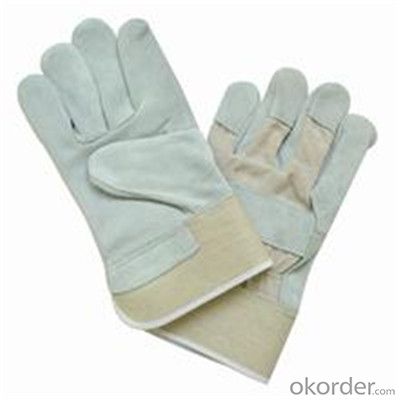
FAQ:
1.What about the delivery.
We can arrange the shipment about 15-25 days after the deposit.
2.What about payment term?
30% T/T deposit, balance against B/L copy.
Full T/T payment if quantity less than MOQ.
3.How much about MOQ?
Normally 100pcs,but small order is acceptable as well.
- Q: I've been trying to look for a tutorial online that teaches the proper way to encase insects in resin for jewelry and other things..they are so neat to look at! However, I cannot find a step-by-step guide on how to do so (without someone saying its cruel or some ridiculous thing). From the info I HAVE gathered, once you get your catalyst and resin mixed, you pour a thin layer and THEN place the bug downlet it dry a bitand pour the rest over??? I also read something about needing to remove the air/oxygen from inside the bug before casting so it doesn't rot? Can anyone who HAS DONE INSECTS IN RESIN please tell me your experiences and the proper way to do soand please save the animal cruelty crap for someone else..don't act like you wouldnt have killed the bug, anyways! LOL P.S.I really want to resin a black widow spiderbut I could assume that spiders may be more difficult to do given their thread-like legs. Any experience is greatly appreciated. Thanks!
- You can buy trade books and read up on theory. Once you understand how things are installed and how they work you can diagnose and troubleshoot. Now don't expect to know everything about every trade. Some electricians have no clue how refrigeration works, and some plumbers have no clue how to build a shed. If you find a problem that needs attention, then do some research online or grab a book about the problem, and then get your hands dirty. You DO NOT have to learn an entire trade to fix a ceiling fan. Just follow the basic safety practices, gloves, glasses, test equipment, tools, and you will do fine. Another good place for info is your local hardware store. Ask questions about tools and what you will need. Ask neighbors and friends to help. Remember start small, do research on each problem one at a time, and buy tools as you need them. It will be very frustrating at first but stick together and pull the logic out of the problem and solve it. What they say in the field with new technicians like yourself is that its sink or swim time. Either you learn it or you sink. Another saying is throwing you to the wolves. Learn to fight or you will die. Good luck.
- Q: Does every planet have a source of light during the night?
- Cold water available, use tongs, wear gloves, goggles and any other personal protective equipment recommended like aprons. Work should usually be performed under a fume hood. If highly toxic fumes might be encountered a fume cabinet and filter or supplied air respirators might be required. Supplies to extinguish and neutralize spills should be readily available. An eye wash station and decontamination shower should be available too.
- Q: whats a chelating cation exchange resin?
- An acetylene cutting torch [cordless by nature]. Don't forget the safety glasses, gloves and fire extinguisher.
- Q: Do dogs really urinate on fire hydrants? Do bears really love honey? Do cats really eat mice?
- 1.)Never handle broken glass with your bare hands. Use a brush and dustpan to clean up broken glass. Place broken glass in the designated glass disposal container. 2.)Examine glassware before each use. Never use chipped, cracked, or dirty glassware. 3.)Do not immerse hot glassware in cold water. The glassware may shatter. 4.)Heated glassware remain very hot for a long time. They should be set aside in a designated place to cool, and picked up with caution. Use tongs or heat protective gloves if necessary.
- Q: What precautions do you need to wear in the use of liquid nitrogen?
- Liquid nitrogen is usually stored in liquid nitrogen tanks, which helps prevent evaporation.Be careful not to splash liquid nitrogen. You want to always control the final position of liquid nitrogen, so try not to mix it.
- Q: They have yellow lines in ny but there all faded how do I now if I'm safe from getting a ticket
- there are something called Gamefaqs and trainers and memory readers.
- Q: fire hose has a flow rate of 5000 liters/minute. What is the flow rate in cubic centimeters per second?
- back2 skl clothes- ipods arent cool anymore, its th iphone now
- Q: I have a situation, and I'm not going to go into all the details because it's a complicated one, but basically what I want to know is whether or not there are any alternatives to buying an electric blanket so as to keep my bed warm. Residents in my building aren't allowed to have electric blankets (I'm assuming it's because they're a fire hazard), but I'd still really like some way to keep my bed warm at night since I get cold easily, and my room is cold in general (so please don't answer with just turn on the heat). Is there anything I can buy that isn't too expensive, or that isn't a health hazard (which is what I've heard about electric blankets)?Any help would be much appreciated.
- You can't fence in the fire hydrant. The fire department has to be able to get to it.
- Q: i need paper thin metal sheets that are pliable and easy to bend. i got some from home depot hardware store and they are like metal found in a soda can, its good stuff but it is kinda rubery, i try to bend it and it wants to stay the shape it is like rubber. its very hard to bend. a metal hanger on the other hand is easy to bend, i bend it and it keeps its bent shape. the metal i have i think is aluminum flashing metal for roofs. it is a little too weak for my application. its paper thin, flimsy, and can be cut with houshold siccors. i want metal thats about a mm thick and easy to bend but not impossible to bend and that can hold a bent shape without trying to rubber bounce back. what metal should i use, who sells it??
- The options you present are using the hose which will probably destroy the books, or do nothing which will probably allow them to be destroyed by fire. A probably either way, really. And that would be a tough choice if those were the only choices. But they're not. What -I- would probably do is go with a certainty: grab as many of the books as I could carry and leave. Assuming I live, I will have absolutely saved some, if not all, of the books and personally destroyed none of them. Sounds like the best of all possible worlds to me!
- Q: I'm in DEP and was considering getting a motorcycle when training was over and I get stationed on a base. Before I even look into what type of motorcycle I want, I wanted to look up the specific rules for the Army on what I'd have to wear while riding in. My main question is would I have to wear a yellow/orange neon vest the entire time? I'm fine with a helmet, extra training courses, long pants, gloves, etc. Even a protection vest with padding is fine with me (it's the neon vest that's a deal breaker for me). Or would that only have to be worn at night? Thanks!
- Virtue Board - An aftermarket circuit board for an electro-pnematic paintball gun made by advantage PB. Feed neck- Part of the gun that the loader goes in. PSP ramping- It is PSP and its a firing mode that allows you to shoot 15 balls per second (BPS) with out pulling the trigger that fast. legal in the PSP tournament series. ASA- Air Source Adapter- where you screw your tank into. Auto- Firing mode that allows you to shoot a preset bps by just holding the trigger, normally only allowed in recreation play. Semi-auto- 1 trigger pull 1 shot fired simple as that- no re-cocking necessary Safety Switch- a push button that usually goes across the trigger or the bolt to not allow the gun to fire. Barrel Condom- a sleeve that goes over the end of the barrel to prevent injury in case of a misfire in a non-shooting zone. Thermal Goggles- A pair of goggles that have a thermal lens in them. A thermal lens has to pieces of plastic sealed together with air in between to prevent fogging. Upgrades- It all depends on the gun but in most cases you can upgrade every part of the marker. Gloves- yes gloves do help protect your hands butI find it easier to play with out them because of less restriction. It all depends on the player though.
Send your message to us
Neoprene Driving Gloves with Split Double Palm Leather Work Glove
- Loading Port:
- Wenzhou
- Payment Terms:
- TT OR LC
- Min Order Qty:
- 88 pc
- Supply Capability:
- 10005655 pc/month
OKorder Service Pledge
OKorder Financial Service
Similar products
Hot products
Hot Searches
Related keywords
